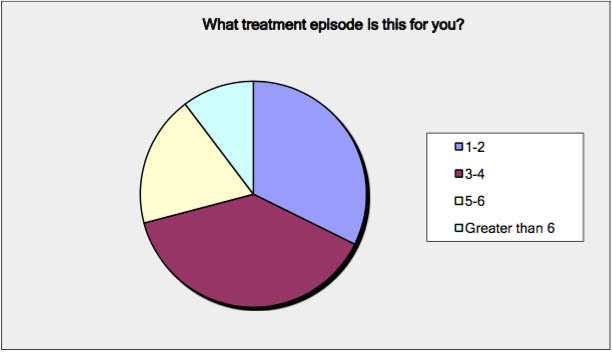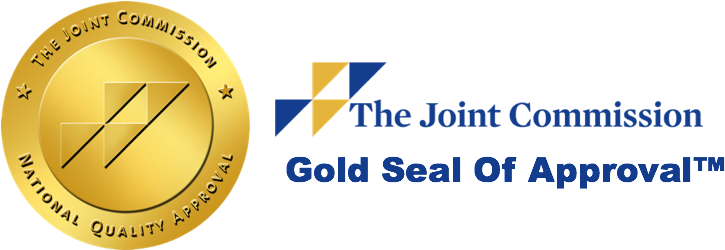The Phoenix Recovery Center Outcome Study
Introduction
According to the 2014 national survey on drug use and health 21.5 million people (age 12 and older) in the U.S. had a substance use disorder (Han, Hedden, Lipari, Copello, & Kroutil, 2015). A major challenge for those struggling with substance use is a lack of meaning in life (Diaz, Horton, & Malloy, 2014), which can lead to a variety of health issues and recovery concerns (Kim, Strecher, & Ryff, 2014; Roepke, Jayawickreme, & Riffle, 2014; Steger, Shin, Shim, & Fitch-Martin, 2013). A greater sense of meaning has been positively associated with the capacity to overcome difficulties in life and an ability to increase mental and physical welfare (Martin, MacKinnon, Johnson, & Rohsenow, 2011). A sense of meaning in life is also a significant predictor of an individual’s substance relapse potential (Martin et al., 2011).
Co-occurring diagnoses (CODs) are associated with being one of the leading causes of disabilities in the United States (Gamble et. al., 2013). Researchers have found that the presence of CODs increase relapses and includes, the possibility of continual relapses due to the impact of mental health symptoms on addiction (Houck, Forcehimes, Gutierrez, & Bogenschutz, 2013; Thorton et al., 2012). While research thus far has looked at certain aspects of personal meaning and CODs for individuals struggling with substance use disorders, there is a further need to understand the relationship that meaning and CODs may have on an individual’s attitude about substances.
Background
- Frankl (1970) discussed the benefit that logotherapy, or the quintessence of finding meaning in a seemingly meaningless situation, can have on addictions in his book The Will to Meaning.
- Brassai, Piko, and Steger (2012) pointed out that meaning in life is a protective factor in life and associated with decreased levels of antisocial and aggressive behaviors and higher levels of physical activity.
- Heintzelman and King (2014) discussed that meaning is often spoken about as being fundamental to human motivation. Heintzelman and King (2014) also discussed that conceptually meaning is derived from feeling as though one has a purpose, mattering in life, and having reliable connections with others.
- Laudet and Humphreys (2013) found that individuals who struggle with CODs have consistent obstacles that may impede sustained recovery due to their symptomology.
- Thege, Urbán, and Kopp (2013) found that an individual’s ability to cope with negative emotions and unpleasant psychological states (anxiety, distress, etc.) can be related to a decreased level of perceived meaning in life.
- Martin, MacKinnon, Johnson, and Rohsenow (2011) found that having increased purpose was a significant predictor of better substance abuse treatment outcomes regarding relapse and use frequency.
Objectives
- This study explores the relationship between an individual’s personal meaning and CODs during their substance use disorder treatment, while also exploring if meaning has a relationship with one’s attitudes towards substances.
- Providing further insight into the importance of integrating meaning in life when addressing CODs during substance use disorder treatment.
- Since substance use disorders are known as a chronic relapsing disease, any ability to alter the relapse cycle should be taken to assist both the individual struggling with the disease but also to lessen the societal impact (Houck et al., 2013; Thornton et al., 2012).
- In gaining further information about the relationships related to the importance of an individual’s personal meaning and their CODs along with their attitudes about substances, counselor educators and counselors will gain a better understanding regarding the need to integrate one’s personal meaning into aspects of substance use treatment and one’s daily life (Fairhurst et al., 2014; Martin et al., 2011; Steger, Dik, & Duffy, 2012; Thornton et al., 2012).
- This research has the potential to increase awareness around addressing one’s personal meaning in life during substance use treatment due to the relationship with one’s COD symptoms and attitudes about substances.
Methodology
- This study explores the relationship between an individual’s personal meaning and their CODs during their substance use disorder treatment, while also exploring if meaning has a relationship with one’s attitudes towards substances.
- Inclusion criteria included being 18 years or older; meeting DSM-V criteria for at least one substance use disorder, an anxiety disorder, and a mood disorder; engaged in treatment services at The Phoenix Recovery Center. Exclusion criteria included not engaging in at least two assessment periods.
- This study has the ability to provide further insight into the importance of integrating meaning in life when addressing CODs during substance use disorder treatment.
- Since substance use disorders are known as a chronic relapsing disease, any ability to alter the relapse cycle should be taken to assist both the individual struggling with the disease but also to lessen the societal impact (Houck et al., 2013; Thornton et al., 2012).
Preliminary Results
This study utilized data from The Phoenix Recovery Center. The assessments applied during the treatment process were the Brief Personal Meaning Profile (PMP-B; Wong, 1998); Burns Anxiety Inventory (BAI; Ahn et al., 2014); Beck Depression Inventory II (BDI-II; Dere et al., 2015); Leeds Dependence Questionnaire (LDQ; Raistrick et al., 2014); and the Brief Substance Abuse Attitude Survey (SAAS; McKim et al., 2014). The current data shows that the majority of the sample (n=807) were male (n=507, 62.6%) between the ages of 25 to 34 (n=319, 62.3%), with most of the sample being single and never married (n=424, 98.8%). Opiates were the primary drug of choice (n=393, 48.9%), with alcohol coming in second (x=260, 32.3%). The primary routes of administration were oral or IV (n=595, 74.0%). Over 75% (n=614, 76.4%) have participated in treatment prior to beginning services with The Phoenix Recovery Center.
Pearson correlations were utilized to examine the relationship between meaning, CODs (anxiety, depression), and attitudes about substances. Significance (2-tailed) was established at p<0.01; the population shows a negative correlation between PMPB, BDI, and BAI; which shows that by increasing meaning symptoms of both depression and anxiety decrease (Table 1). While a positive correlation is shown between BSAAS, Leeds, BDI, and BAI; showing that as depression and anxiety symptoms lessen attitudes towards substances also begin to change
(Table 1). The change in attitudes and beliefs about addiction have been associated with substance dependence treatment progress (Fairhurst et al., 2014). In looking at the correlations amongst age groups the youngest and oldest participants show smaller correlations in contrast to the other age groups (Table 2), it is predicted that this is due to life stages and changes for these age ranges.
Preliminary Conclusions & Summary
The findings demonstrate significant negative correlations between meaning and CODs (e.g. as meaning increases, depression and anxiety decreases). Additionally, as a sense of meaning is developed and the patient harnesses an intentionality of meaning pursuit, chemical dependence decreases and attitudes about substances improve. The findings support the importance of meaning development as a significant intervention in the formation of stabilization and sustained recovery. This supports the previous research which suggests the value of meaning development in sustained recovery by decreasing the frequency of future relapses (Fairhurst et al., 2014; Martin et al., 2011). Longitudinal efforts are required in order to assess the sustainability of both meaning and the predicted decrease in relapse occurance.
Continued research will assist in better understanding the relationship between meaning with COD’s and attitudes and behaviors with chemical dependency. It is vital to better understand the need to integrate one’s personal meaning into aspects of substance use treatment and one’s daily life (Fairhurst et al., 2014; Martin et al., 2011; Steger, Dik, & Duffy, 2012; Thornton et al., 2012). Heintzelman & King (2014) described the importance of meaning and purpose in life as being a core factor, with both motivational and cognitive components, in allowing an individual feel like they matter, have significance, and understand the soundness about their life making sense. Purpose in life has also been linked with pursuing one’s highly valued goals (George & Park, 2014; Heintzelman & King, 2014; Martela & Steger, 2016). Feelings of worthiness and goal striving leads to feelings of satisfaction and fulfillment which are related to having purpose in life; which has been shown to increase one’s meaning (Martela & Steger, 2016).
Relationship Status

Drug of Choice

Treatment Episode

Table 1

Table 2

References
Ahn, W. Y., Vasilev, G., Lee, S. H., Busemeyer, J. R., Kruschke, J. K., Bechara, A., & Vassileva, J. (2014). Decision-making in stimulant and opiate addicts in protracted abstinence: Evidence from computational modeling with pure users. Frontiers in Psychology, 5, 1-15.
Brassai, L., Piko, B. F., & Steger, M. F. (2012). Existential attitudes and Eastern European adolescents’ problem and health behaviors: Highlighting the role of the search for meaning in life. Psychological Record, 62(4), 719-734.
Dere, J., Watters, C. A., Yu, S. C. M., Bagby, R. M., Ryder, A. G., & Harkness, K. L. (2015). Cross-cultural examination of measurement invariance of the Beck Depression Inventory–II. Psychological Assessment, 27(1), 68-81.
Diaz, N., Horton, E. G., & Malloy, T. (2014). Attachment style, spirituality, and depressive symptoms among individuals in substance abuse treatment. Journal of Social Service Research, 40(3), 313-324.
Fairhurst, C., Böhnke, J. R., Gabe, R., Croudace, T. J., Tober, G., & Raistrick, D. (2014). Factor analysis of treatment outcomes from a UK specialist addiction service: Relationship between the Leeds Dependence Questionnaire, Social Satisfaction Questionnaire and 10- item Clinical Outcomes in Routine Evaluation. Drug and Alcohol Review, 33(6), 643- 650.
Frankl, V. (2006). Man’s search for meaning. Boston, MA: Beacon Press.
Gamble, S. A., Talbot, N. L., Cashman-Brown, S. M., He, H., Poleshuck, E. L., Connors, G. J.,& Conner, K. R. (2013). A pilot study of interpersonal psychotherapy for alcohol-dependent women with co-occurring major depression. Substance Abuse, 34(3), 233-241.
Han, B., Hedden, S. L., Lipari, R., Copello, E. A. P., & Kroutil, L. A. (2015). Receipt of services for behavioral health problems: Results from the 2014 national survey on drug use and health. Rockville, MD: Substance Abuse and Mental Health Services Administration.
Heintzelman, S. J., & King, L. A. (2014). (The feeling of) meaning-as-information. Personality and Social Psychology Review, 18, 153-167.
Houck, J. M., Forcehimes, A. A., Gutierrez, E. T., & Bogenschutz, M. P. (2013). Test-retest reliability of self-report measures in a dually diagnosed sample. Substance Use & Misuse, 48(1-2), 99-105.
Kim, E. S., Strecher, V. J., & Ryff, C. D. (2014). Purpose in life and use of preventive health care services. Proceedings of the National Academy of Sciences, 111(46), 16331-16336.
Laudet, A. B., & Humphreys, K. (2013). Promoting recovery in an evolving policy context: What do we know and what do we need to know about recovery support services?. Journal of Substance Abuse Treatment, 45(1), 126-133.
Martin, R. A., MacKinnon, S., Johnson, J., & Rohsenow, D. J. (2011). Purpose in life predicts treatment outcome among adult cocaine abusers in treatment. Journal of Substance Abuse Treatment, 40(2), 183-188.
McKim, C., Warren, J., Asfaw, A. H., Balich, R., Nolte, M., Perkins, D., … & Zakaria, N. S. (2014). An Integrative Model of Recovery: A Qualitative Study of the Perceptions of Six Counseling Doctoral Students. Research in Psychology and Behavioral Sciences, 2(1), 17-23.
Raistrick, D., Tober, G., Sweetman, J., Unsworth, S., Crosby, H., & Evans, T. (2014). Measuring clinically significant outcomes-LDQ, CORE-10 and SSQ as dimension measures of addiction. Psychiatric Bulletin, 38(3), 112-115.
Roepke, A. M., Jayawickreme, E., & Riffle, O. M. (2014). Meaning and health: A systematic review. Applied Research in Quality of Life, 9(4), 1055-1079.
Steger, M. F., Dik, B. J., & Duffy, R. D. (2012). Measuring meaningful work: The work and meaning inventory (WAMI). Journal of Career Assessment, 20(3), 322-337.
Steger, M. F., Shin, J. Y., Shim, Y., & Fitch-Martin, A. (2013). Is meaning in life a flagship indicator of well-being? In A. S. Waterman (Ed.), The best within us: Positive psychology perspectives on eudaimonia (pp.159–182). Washington, DC: American Psychological Association.
Thege, B. K., Urbán, R., & Kopp, M. S. (2013). Four-year prospective evaluation of the relationship between meaning in life and smoking status. Substance Abuse Treatment, Prevention, and Policy, 8(1), 8-13.
Thornton, L. K., Baker, A. L., Lewin, T. J., Kay-Lambkin, F. J., Kavanagh, D., Richmond, R., Kelly, B., & Johnson, M. P. (2012). Reasons for substance use among people with mental disorders. Addictive Behaviors, 37(4), 427-434.
Wong, P. T. P. (1998). Implicit theories of meaningful life and the development of the Personal Meaning Profile (PMP). In P. T. P. Wong & P. S. Fry (Eds.), The human quest for meaning: A handbook of psychological research and clinical applications (pp. 111–140). Mahwah, NJ: Erlbaum.[/mk_fancy_title]







